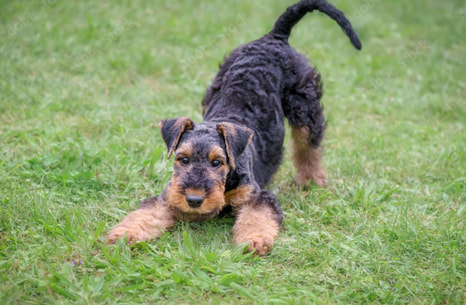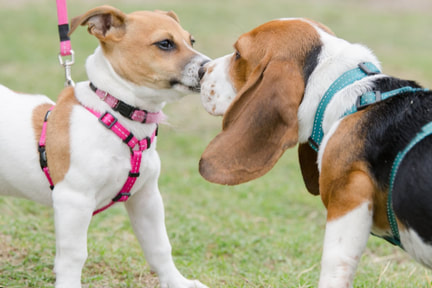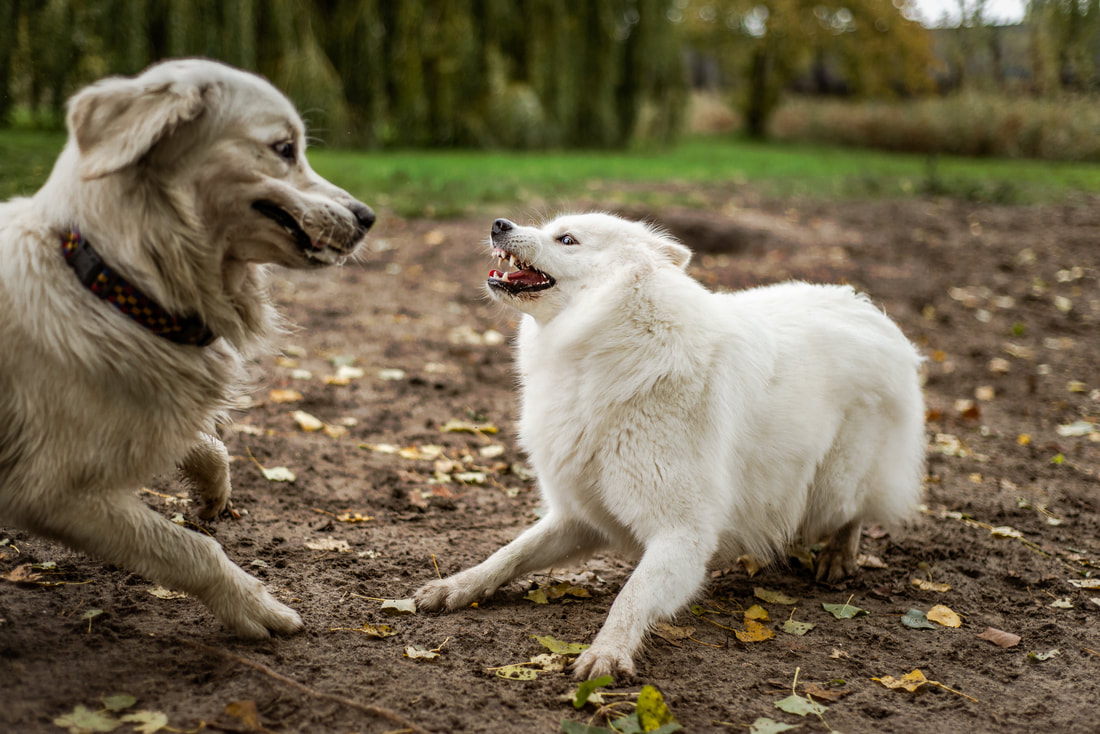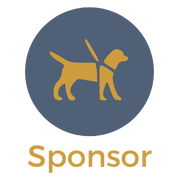-
ADOPTION
- Get Involved
- DONATE
- ABOUT US
-
RESOURCES
-
Resources for Dog Owners
>
- Training Reimbursement Program
- Special Offer: Dog Training Over Video Chat
- The First 24 Hours with Your Rescue Dog
- You Adopted a Dog. Now What?
- The Secret to Success: The Two Week Shutdown
- Introducing Dogs to Each Other
- How to Introduce a Dog to a Cat
- Children and Dogs
- Things to do with Your Dog
- Teaching Appropriate Behavior
- Houstraining Your New Puppy
- The Benefits of Crate Training
- Resources for Cat Owners >
- ReHoming a Pet >
- Lost and Found Pet Resources
-
Resources for Dog Owners
>
- Store
- Forms & Docs
-
FOSTER & VOLUNTEER RESOURCES
Introducing Dogs to Each Other.
If you have a resident dog and a new one will be entering or visiting your home, there are
things you can do to ensure that the meeting goes off without a hitch. A new dog can
mean you are bringing home a foster or a new family member, someone who has a dog is
moving into your house, or someone is visiting with a dog.
If you know that both dogs are very social with a variety of other dogs, the meeting
should be easy. However, some dogs don’t get out and mix with other dogs that much or
may have only had one or two dog friends in their lives. These dogs may seem to have
better social skills than they actually do, so introducing them to new dogs may require
more care and effort. Another factor to consider is whether or not the dogs have been
spayed or neutered; if not, the meeting may be more difficult.
If you are uncertain how one (or both) of the dogs will react, be cautious. First, plan to
have the dogs meet on neutral ground. Choose a place where neither dog is likely to feel
territorial. Even your dog’s favorite park is not a good spot, unless it is a dog park (since
dogs are often used to meeting other dogs there). If you are adopting a dog from a
rescue (like The Rescue Crew) or a shelter, ask the foster, volunteer or staff member if
they can help to introduce the dogs. If your dog is accustomed to meeting dogs at a pet
supply store, you can ask the store’s trainer to help with the introduction. The dogs
could casually meet while you are on a shopping trip. If either dog has a history of
difficulty getting along with other dogs, the best strategy would be to hire a certified
professional behavior consultant to help you gradually introduce the two dogs to each
other.
When the meeting occurs, have each dog on leash, each with a calm relaxed adult
handler. Keep the leads loose, since tension on the leash communicates to the dog that
you are fearful or anxious about their meeting. They can sense this and it will in turn
make them more fearful and anxious. Walk the dogs side by side with a safe distance
between the dogs.
If you have a resident dog and a new one will be entering or visiting your home, there are
things you can do to ensure that the meeting goes off without a hitch. A new dog can
mean you are bringing home a foster or a new family member, someone who has a dog is
moving into your house, or someone is visiting with a dog.
If you know that both dogs are very social with a variety of other dogs, the meeting
should be easy. However, some dogs don’t get out and mix with other dogs that much or
may have only had one or two dog friends in their lives. These dogs may seem to have
better social skills than they actually do, so introducing them to new dogs may require
more care and effort. Another factor to consider is whether or not the dogs have been
spayed or neutered; if not, the meeting may be more difficult.
If you are uncertain how one (or both) of the dogs will react, be cautious. First, plan to
have the dogs meet on neutral ground. Choose a place where neither dog is likely to feel
territorial. Even your dog’s favorite park is not a good spot, unless it is a dog park (since
dogs are often used to meeting other dogs there). If you are adopting a dog from a
rescue (like The Rescue Crew) or a shelter, ask the foster, volunteer or staff member if
they can help to introduce the dogs. If your dog is accustomed to meeting dogs at a pet
supply store, you can ask the store’s trainer to help with the introduction. The dogs
could casually meet while you are on a shopping trip. If either dog has a history of
difficulty getting along with other dogs, the best strategy would be to hire a certified
professional behavior consultant to help you gradually introduce the two dogs to each
other.
When the meeting occurs, have each dog on leash, each with a calm relaxed adult
handler. Keep the leads loose, since tension on the leash communicates to the dog that
you are fearful or anxious about their meeting. They can sense this and it will in turn
make them more fearful and anxious. Walk the dogs side by side with a safe distance
between the dogs.
|
Then, cross paths (still maintaining that distance) and allow the dogs to smell where the other has walked. If either of the dogs barks, snaps and lunges toward the other, consider hiring a certified professional dog trainer or behavior consultant to teach you how to do the "Look at That" game to help the dogs feel calm.
Next, let the dogs meet. As the dogs approach each other, watch their body language closely, paying attention to the entire body. The dogs may need to do a little posturing or make a little noise, but if you don’t know how to tell the difference between dogs getting to know each other and dogs who don’t like each other, have someone there who does. |
If the dogs have shown no signs of hostility toward each other up to this point, take them to an enclosed area, drop their leashes, step back and give them space to get to know each
other. We have a tendency to micro-manage these interactions, but in general it’s best if we allow the dogs to work it out with minimal interference. Humans hovering and getting too involved can be frustrating to the dogs, which can make them tense and spoil the
interaction.
For the most part, dogs in this situation respond well to verbal feedback from humans. For
example, if the dogs are getting too tense around each other, saying something in a soothing tone of voice (such as “It’s OK, guys, cool your jets”) can help them to take it down
a notch, shake off and start fresh. If one dog is getting too overbearing and the other isn’t
correcting her, we can often help out by saying something like “Hey, knock it off!” If the
dogs do shake off their tension and engage with each other in polite, appropriate ways, we
can reward them for those behaviors and encourage more of them by speaking in a happy
tone (“Good dogs! Well done!”). In most cases, that kind of verbal guidance is all the
interference they need from us. We must only step in and physically separate them when
they are becoming too excited and cannot give themselves a break, or when it becomes
clear that their relationship is headed for conflict.
other. We have a tendency to micro-manage these interactions, but in general it’s best if we allow the dogs to work it out with minimal interference. Humans hovering and getting too involved can be frustrating to the dogs, which can make them tense and spoil the
interaction.
For the most part, dogs in this situation respond well to verbal feedback from humans. For
example, if the dogs are getting too tense around each other, saying something in a soothing tone of voice (such as “It’s OK, guys, cool your jets”) can help them to take it down
a notch, shake off and start fresh. If one dog is getting too overbearing and the other isn’t
correcting her, we can often help out by saying something like “Hey, knock it off!” If the
dogs do shake off their tension and engage with each other in polite, appropriate ways, we
can reward them for those behaviors and encourage more of them by speaking in a happy
tone (“Good dogs! Well done!”). In most cases, that kind of verbal guidance is all the
interference they need from us. We must only step in and physically separate them when
they are becoming too excited and cannot give themselves a break, or when it becomes
clear that their relationship is headed for conflict.
Here are some general body language signs to look for to get a general idea of where the interaction is headed.
|
Nose-to-nose meetings can be very stressful for dogs; especially those who are fearful or feel threatened. Nose-to-nose greetings may cause dogs to make a bad decision and bite out of fear or defensiveness. When dogs first look into each other’s eyes, the appropriate behavior is to give a glance and then look away. A hard stare into another dog’s eyes is a challenge. If the dogs practice inappropriate behavior like stiffening or staring, try to get the dogs to calm down by offering verbal feedback. If that doesn’t work, you can pick up their leashes and walk them around until they shake off and loosen up, then try again.
|
|
If they stiffen their bodies and stare into each other’s eyes with their hair up and their teeth bared, they probably aren’t going to become fast friends. If they lunge at each other and try to fight, separate them and don’t try further introductions without help from a certified professional behavior consultant. Some dogs cannot safely interact with other animals and therefore should be the only pet in the home. Most of these dogs can be taught to ignore other animals while out in public, but they may never be able to safely interact with them.
|
|
If one dog pursues the other continually and ignores the other dog’s corrections
(e.g. lip curls, growls or air snaps), it can turn from play into bullying. These kinds of corrections are frequently mistaken for aggression, but they are actually part of healthy, normal dog communication. Dogs should be able to correct each other when one is being inappropriate; likewise, they should be able to pay attention to another dog’s corrections. It is also important for dogs to take turns being the chaser and the one being chased, and to take breaks when they get too amped up. If they don't pick up their leashes and walk them. |

If the dogs try to play by pawing or play-bowing with their legs stretched out in
front of them, they may want to be best buddies. Allow them to get to know each
other, and give praise for each nice interaction.
If the dogs seem fine with each other, drive them home, preferably in separate crates or cars so that the close quarters of a vehicle won’t create unnecessary tension between them. At home, let them settle in, but make sure you’ve put away your dog’s toys, bones and food bowls first, since these items may be sources of conflict. Whenever you feed the dogs, and certainly if you’re going to offer highvalue items like Kongs or chews, it may be best to separate them while they eat. Once the dogs are good friends, they may be more willing to chomp side by side on food and high-value items.
front of them, they may want to be best buddies. Allow them to get to know each
other, and give praise for each nice interaction.
If the dogs seem fine with each other, drive them home, preferably in separate crates or cars so that the close quarters of a vehicle won’t create unnecessary tension between them. At home, let them settle in, but make sure you’ve put away your dog’s toys, bones and food bowls first, since these items may be sources of conflict. Whenever you feed the dogs, and certainly if you’re going to offer highvalue items like Kongs or chews, it may be best to separate them while they eat. Once the dogs are good friends, they may be more willing to chomp side by side on food and high-value items.
A significant portion of the Resources sections of this website, and content therein, are reproduced from Best Friends (www.bestfriends.org). Specific authors are noted where appropriate. Resources utilized from the Best Friends website are available for use and reproduction without prior contact. Much of this content is protected by copyright, trademark, and other intellectual property laws.
Please Help Fund Our Lifesaving Mission.
[email protected] | 612-299-2001
3500 Vicksburg Lane N., #220, Plymouth, MN 55447-1334
(mailing address only)
3500 Vicksburg Lane N., #220, Plymouth, MN 55447-1334
(mailing address only)
© The Rescue Crew. All rights reserved.
-
ADOPTION
- Get Involved
- DONATE
- ABOUT US
-
RESOURCES
-
Resources for Dog Owners
>
- Training Reimbursement Program
- Special Offer: Dog Training Over Video Chat
- The First 24 Hours with Your Rescue Dog
- You Adopted a Dog. Now What?
- The Secret to Success: The Two Week Shutdown
- Introducing Dogs to Each Other
- How to Introduce a Dog to a Cat
- Children and Dogs
- Things to do with Your Dog
- Teaching Appropriate Behavior
- Houstraining Your New Puppy
- The Benefits of Crate Training
- Resources for Cat Owners >
- ReHoming a Pet >
- Lost and Found Pet Resources
-
Resources for Dog Owners
>
- Store
- Forms & Docs
-
FOSTER & VOLUNTEER RESOURCES








